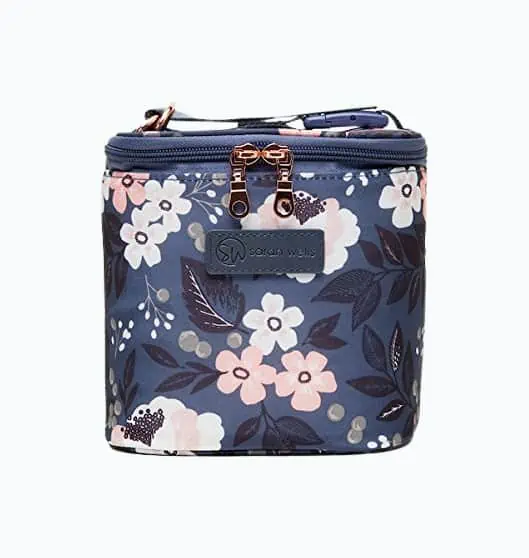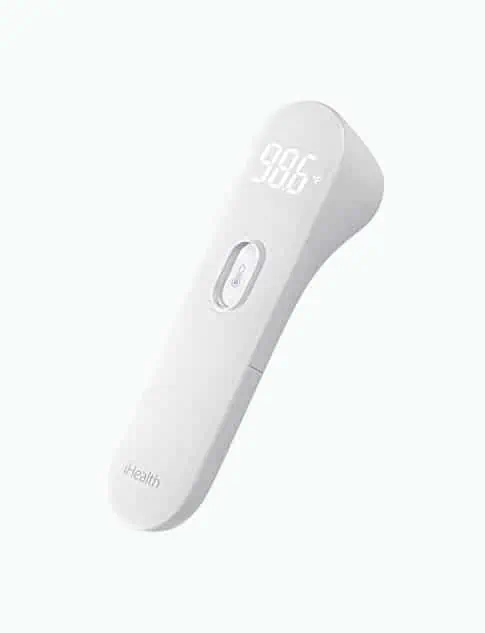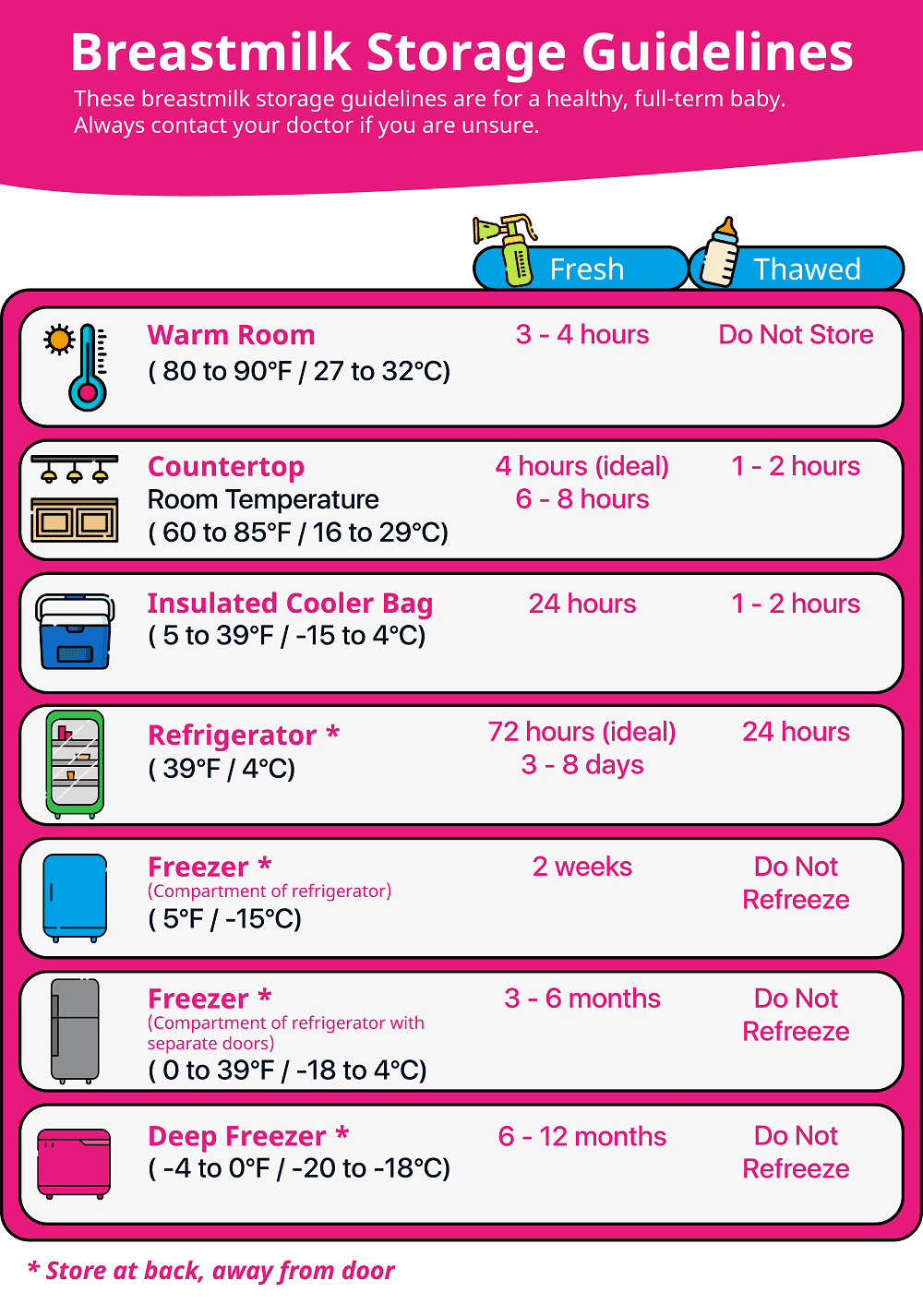Can you heat breast milk after storing it in the fridge or freezer? And what’s the best way to prepare stored breast milk?
There are many reasons we need to pump and store our breast milk. But it’s essential to store and heat it properly to keep our babies safe from dangerous germs and bacteria.
Our medical experts are moms too, and they have the answers to all your questions about reheating breast milk. In this article, we’ll discuss everything you need to know about how to warm up your stored breast milk to feed your baby safely.
Key Takeaways
- Store breast milk in BPA-free plastic bottles, glass bottles, or freezer bags; follow CDC guidelines for storage times and temperatures.
- To heat breast milk, thaw it in the fridge overnight, then warm it in a bowl of warm water for 20 minutes and swirl to distribute heat evenly.
- Never heat breast milk in a microwave, as it can create hot spots and damage nutrients; use a touchless, instant-read thermometer or test the temperature on your wrist.
- If you’re unsure if breast milk has spoiled, look for signs such as a foul odor, curdling, or sour taste; when in doubt, play it safe and throw it out.
How Should I Store Breast Milk?
If you choose to pump your breast milk, you need to store it in a cold place until you’re ready to use it again. The methods you use to store your breast milk should be determined by when you plan to use it next.
Breast Milk Containers
There are many containers specifically created to store breast milk. They include:
- BPA-free plastic bottles.
- Glass bottles.
- Freezer bags.
You can even purchase entire kits that contain a breast milk cooler, a breast pump, and storage containers. Avoid using regular plastic bags, as they can burst when frozen, and the plastic may leech into the breast milk.
Best Temperature To Store Breast Milk
It’s essential to store your breast milk at the correct temperature to prevent bacteria from growing, especially if you’re storing a half-used bottle that’s been exposed to saliva.
The U.S. Centers for Disease Control and Prevention (CDC) provides these helpful guidelines to ensure safe storage (1):
- Fresh breast milk: You can store freshly pumped breast milk in a 40-degrees Fahrenheit refrigerator for up to four days or a 0-degrees Fahrenheit freezer for up to six months.
- Thawed breast milk: You can place thawed breast milk back in the refrigerator for up to one day, but you should never refreeze it once thawed.
- Unfinished bottle: You need to reuse breast milk from a bottle your baby has fed from within 2 hours of the feeding. You can store it right on the counter or in the fridge. After 2 hours, dispose of it. The saliva will start breaking down the enzymes in the milk, and bacteria can grow.
You may want to get a storage system that allows you to keep track of how long breast milk has been in your freezer or fridge. You can also develop your own using post-its, chalk markers, or whatever you find easiest.
Why Heat Breast Milk?
You don’t need to heat breast milk. Your breast milk does not need to reach a specific temperature after being thawed to be usable. As long as it has reached a liquid state, without any ice crystals, it’s safe for your baby to ingest.
However, many babies prefer warm breast milk. Heating the breast milk can take off the cold edge, making for a more comfortable feeding experience. Warm breast milk can also help soothe and calm babies during feedings.
How Do I Heat Breast Milk?
Heating breast milk is simple. Just follow these three steps:
- Thaw: Thaw your breast milk in the fridge overnight. It should reach a fully liquid state. Do not thaw frozen breast milk at room temperature.
- Warm: Place the thawed breast milk into a bowl of warm water for 20 minutes.
- Swirl: Swirl the milk inside the bottle to evenly distribute the heat and reconstitute it.
If you’re in a hurry and your milk is frozen in bags, you can thaw and warm the milk by holding the bag under running warm water. You can use your fingers to break up the ice crystals, speeding the process.
Editor's Note:
Michelle Roth, BA, IBCLCThe thing you need to be most careful of is overheating. If breast milk becomes too hot, it not only loses some of its beneficial nutrients, but it can burn your baby. The bottle, especially if it’s glass, can also overheat and burn your baby’s skin when touched.
Pro Tip
Heating Breast Milk on the Go
Unless you plan on never leaving the house with your baby, there will likely be times when you need to feed on the go without the comforts of home. While some mothers choose to breastfeed in public, others bring bottles of breast milk with them.
Here are a few ideas on how to keep the breast milk flowing, no matter where you’re going.
1. Bring Thawed Bottles
You can store thawed breast milk at room temperature for 2 hours. Store the bottles in your favorite diaper bag if your outing is short.
2. Bring a Cooler

If you plan to be out for an extended period, consider a longer-lasting storage solution.
If your baby will drink cold breast milk, carry the bottles in a milk cooler. It will keep your breast milk safe for up to twelve hours.
3. Bring a Travel Warmer

If your baby prefers warmed breast milk, keep the bottles in the cooler, but use a travel bottle warmer to heat them. You can also run the bottle under hot water in a bathroom, or ask a restaurant waiter for a glass of hot water.
Avoid keeping breast milk in a hot car, and track how long bottles have been sitting out at room temperature to avoid spoiling. Always check the temperature before giving a bottle to your baby.
Checking Breast Milk Temperature

The easiest way to test the temperature of breast milk is to place a few drops on the inside of your wrist. It should be slightly warm but not hot.
You can also purchase a touchless, instant-read thermometer to check the temperature of your milk before serving.
The ideal temperature for breast milk is approximately 98.6 F, just around the average body temperature.
Don’t put your finger in the breast milk or place the bottle to your lips — this will increase the risk of passing germs on to your baby.
Can You Overheat Breast Milk?
The primary concern with overheating breast milk is burning your baby’s sensitive mouth and skin as they try to drink the milk or touch the hot bottle.
Overheating also damages breast milk, destroying many of the essential nutrients your baby needs (2).
If you accidentally overheat a bottle of breast milk, you can cool it down, and it will be safe for your baby to drink. However, you want to make sure the breast milk is used within 2 hours.
Does Heating Change Breast Milk?
Your breast milk may look slightly different after you store it and when you heat it.
Once breast milk is refrigerated or frozen, it may separate. The fat in the milk travels to the top while the liquid sinks to the bottom. Simply swirl the bottle once it’s warmed to mix the solids back in.
After heating, it’s normal for your breast milk to change color. It may take on a blue, yellow, or even brown hue (3). This discoloration is not generally a sign something is wrong with your breast milk. It is still safe for your baby to drink.
When Breast Milk Goes Bad
There are times when a bottle may have been left out too long, or that thawed portion of breast milk in the fridge doesn’t seem right. In these situations, it’s key to remember that breast milk can go bad.
There are a few key identifiers to spotting spoiled breast milk.
1. Curdling
Just as with cow’s milk, the most obvious sign of spoiling will be a foul odor and curdling. Even though your breast milk may separate, it should easily mix back together. If it does not, it may have gone bad.
2. Sour Taste
If you’re concerned about your breast milk, taste it. It will have a strong sour taste if it has gone bad.
3. Smells Soapy
Occasionally, stored breast milk will have a smell or taste that is often described as “soapy.” This taste is thought to be from excess lipase in your milk. This milk is still safe for your baby, though some babies reject the milk because of the change in taste.
If you believe this is happening with your milk, you can try scalding and quickly cooling freshly pumped milk before storing it (4). If you have previously frozen milk that your baby won’t accept, consider trying to mix it with freshly pumped milk.
There’s no known way to get rid of the soapy smell and taste once the milk has been frozen and thawed, though some moms suggest adding vanilla extract may make it more palatable.
4. Play it Safe
If you’re unsure if your breast milk has spoiled, play it safe, and throw it out. Make sure to track how old your stored breast milk is. Many freezer bags and bottles have space for you to write the date and time.
Use the breast milk with the oldest date first. Sort them in your freezer so older milk is right in front and ready to be taken out first.
Pro Tip











